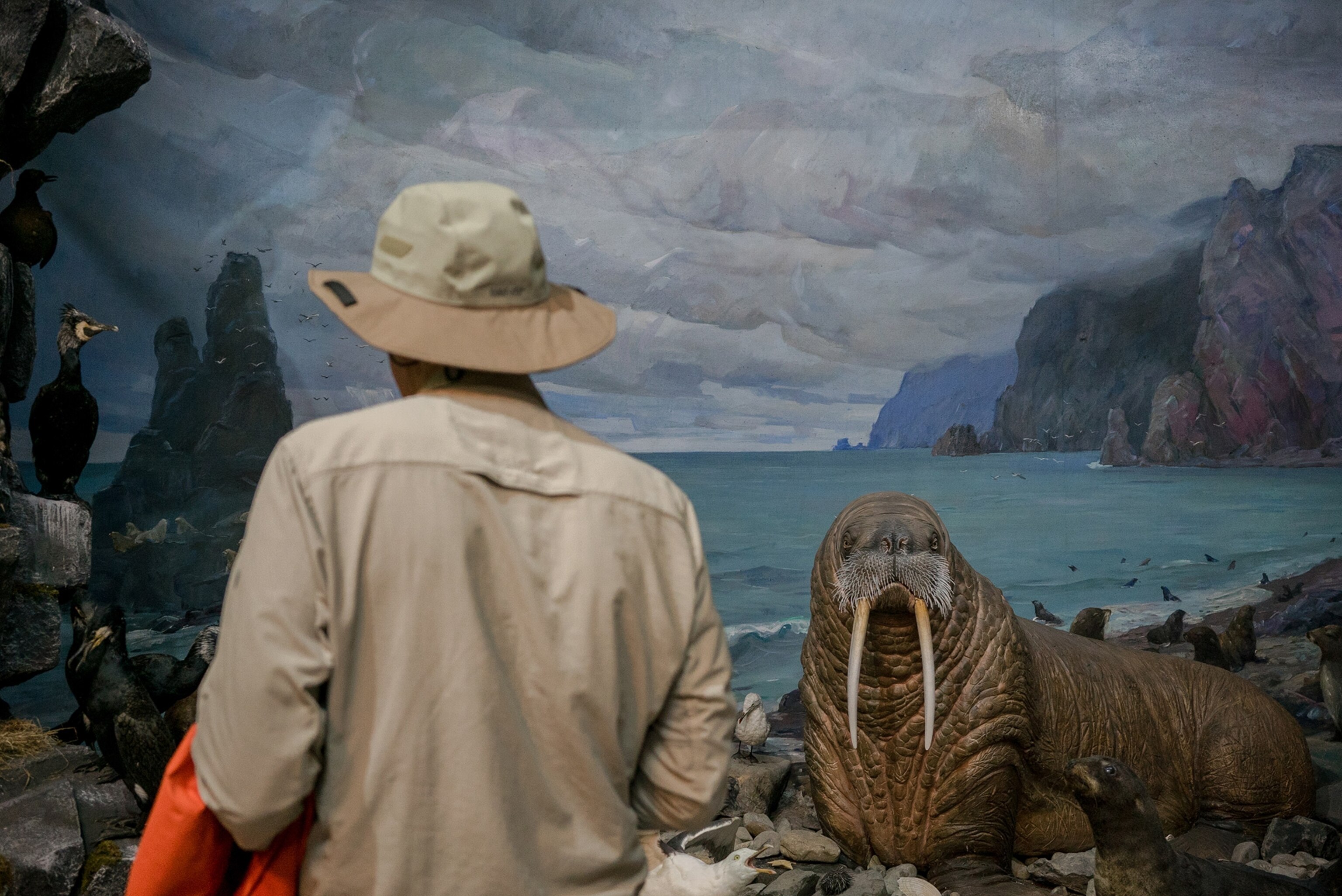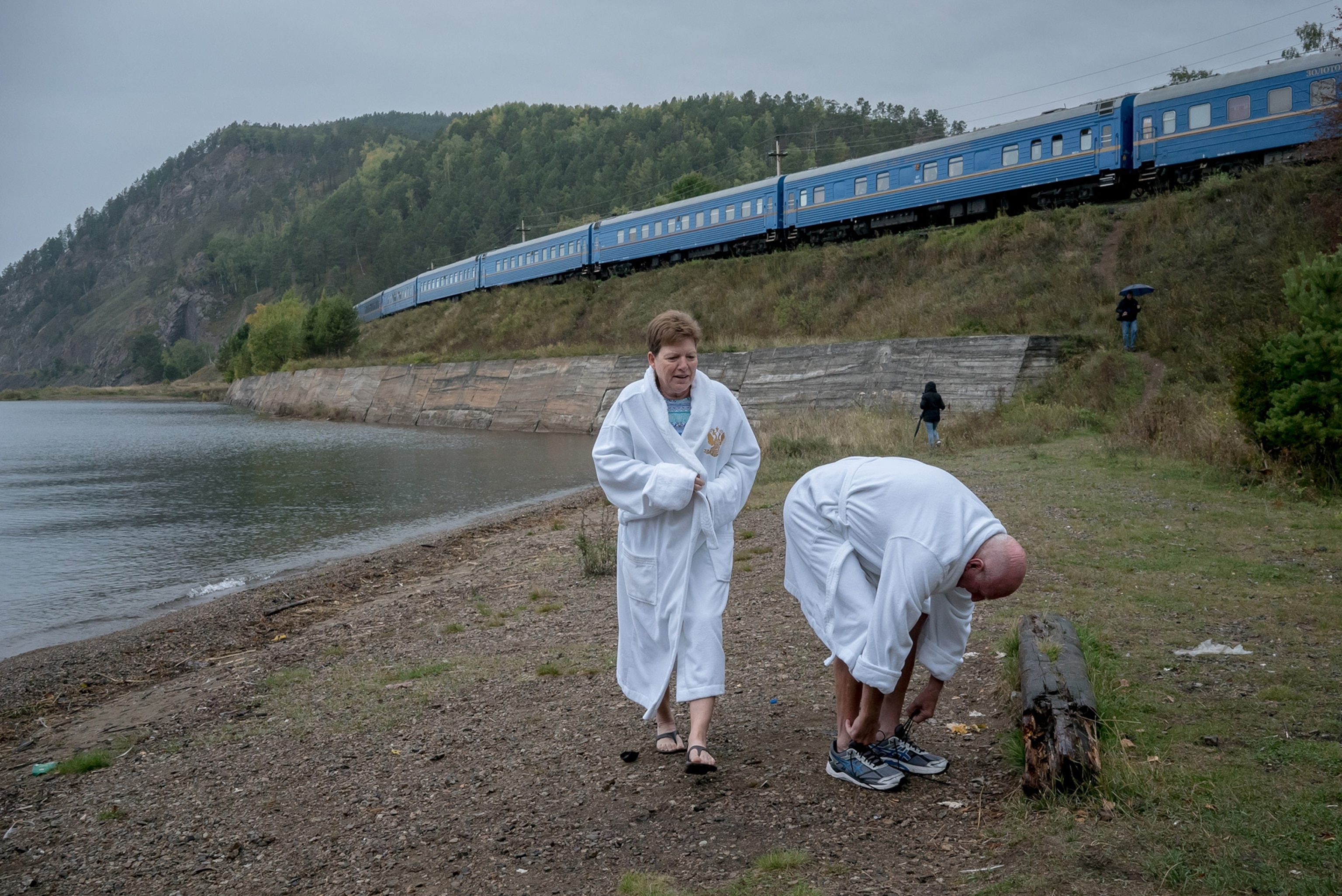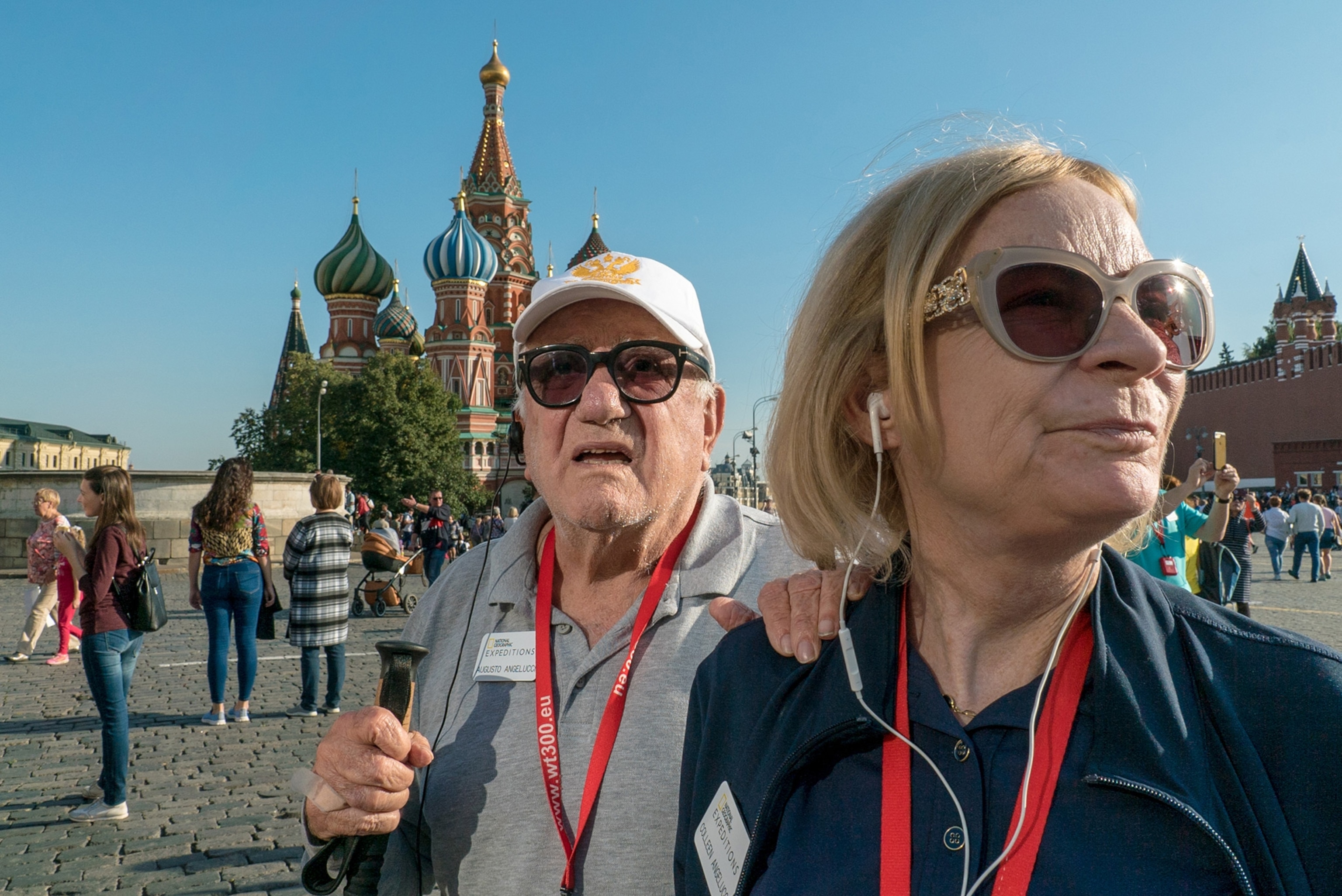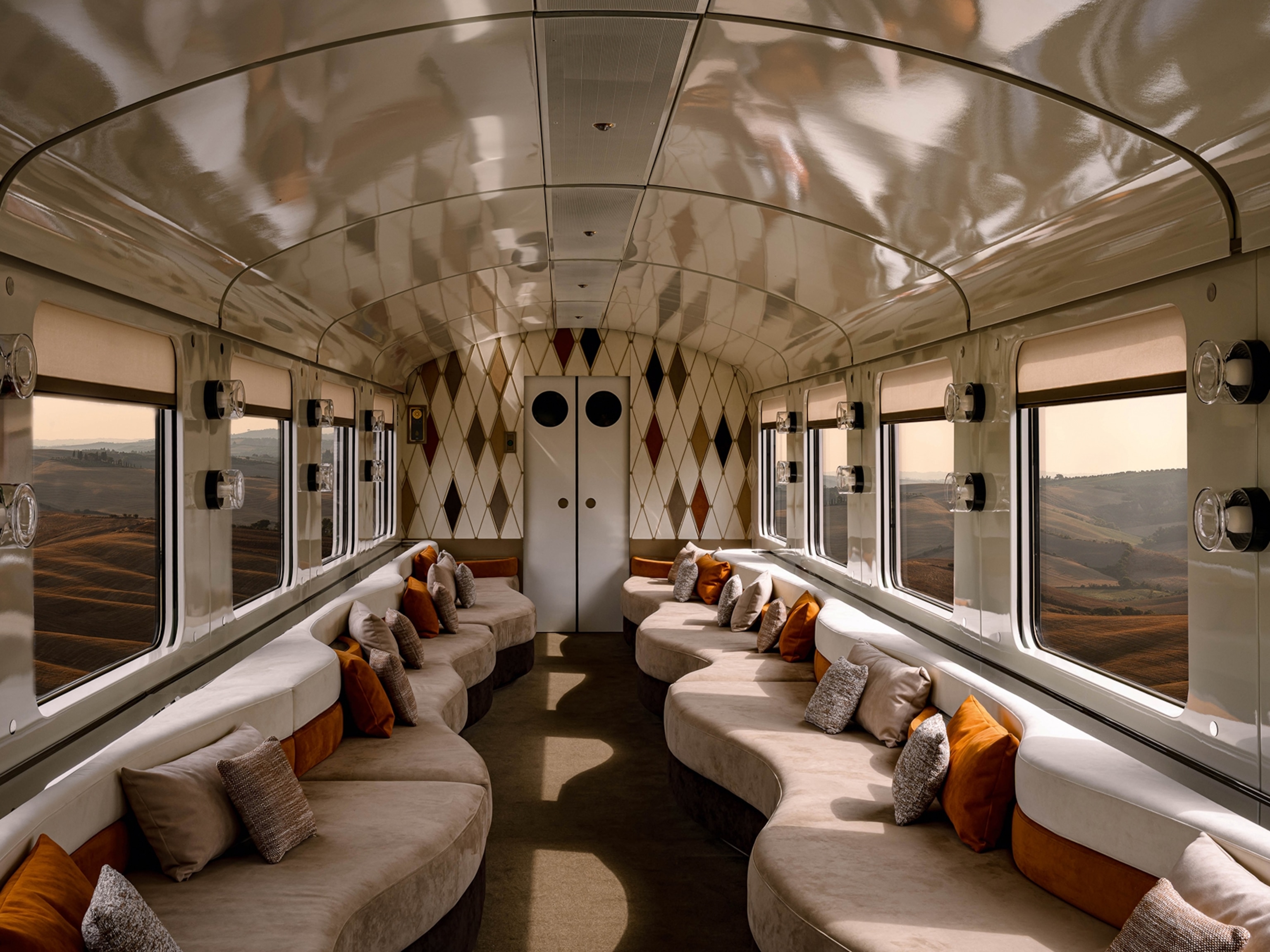See what it’s like to travel on the Trans-Siberian Railway
Experience one of the longest train rides in the world.
It’s pouring rain as we board the train in Vladivostok, a major port city in the Far East of Russia, which is a nine-hour boat ride from North Korea. The train is painted in gray and blue and the emblem, “Golden Eagle Trans-Siberian Express,” marks each car in gold serif type.
The route crosses the Mongolian steppe and the snow-covered Ural Mountains, rushing past wooden cottages in Siberia to Moscow’s imposing architecture. Our group, on a 16-day National Geographic Expeditions rail journey, is comprised of Americans, a Canadian, a Russian tour leader, a historian—and me, a photo coordinator at National Geographic.
About 50 people staff the train, from cabin attendees, servers, bartenders, and managers to engineers, cooks, chefs, pastry chefs, bakers, and even a harpist and pianist. As the train gains speed, the windows draped in beige curtains turn into dark, glossy mirrors reflecting the inside of the cars, each decorated with old-style furniture and wall-to-wall red carpets.
It will be nearly 6,000 miles until we reach Moscow—this is one of the longest railways in the world. (Discover the best of Moscow.)
Over the course of 12 days and 13 nights, we cross 51 settlements and two borders. We stop in eight, including Ulaanbaatar, Mongolia, where we visit the largest horseman statue in the world, standing 130 feet tall and weighing 260 tons of steel. We walk through the tourist section of the national park and enjoy the perfect green steppe and rock formations. For three full days, we pass through Russia's most remote landscapes, and don’t stop to get off the train even once. We change time zones seven times. (See 25 of Russia's cultural and natural treasures.)
We visit dozens museums, most of which showcase natural history. At one stop, two couples—Paul Riley and Trista Bowman from Canada and Curtis and Emalee Burton from Texas—take a plunge into the freezing depths of the largest freshwater lake in the world, Lake Baikal. (Drive across the deepest lake in the world.)

Muted green forests pass swiftly behind the train's framed glass windows. The sound of steel wheels clashing on the railway act as a bass track to the melody of the harp. (Discover Moscow's colorful cathedrals and striking palaces.)
John Chott, who has been living in Washington D.C. for the past 40 years, requests "vody, pozhaluysta," (water, please) from the server. “I took a Russian class before I came on the trip,” he says.
The sun is shining bright as we disembark the train in Moscow, 16 days and nearly 6,000 miles after the start of this epic Trans-Siberian journey.
- National Geographic Expeditions











